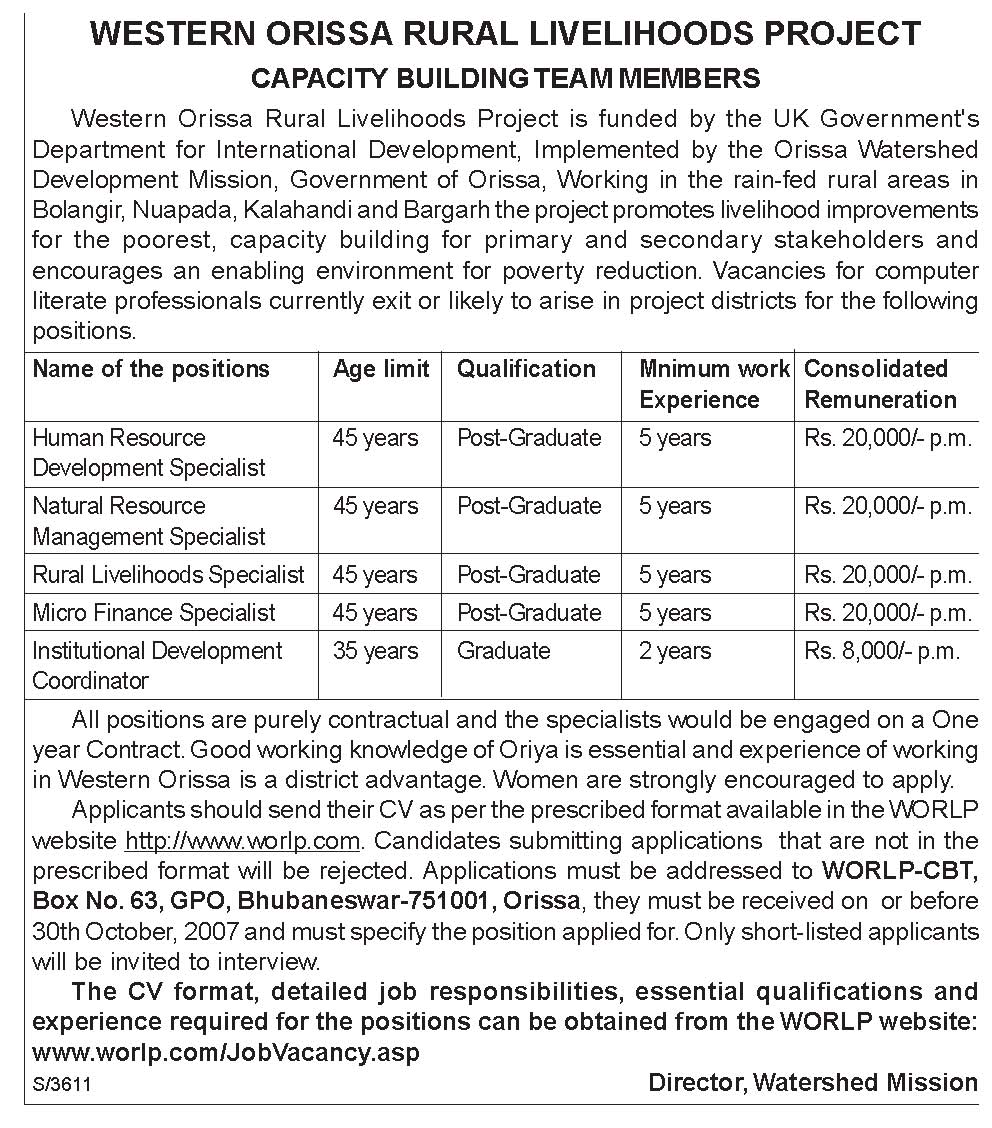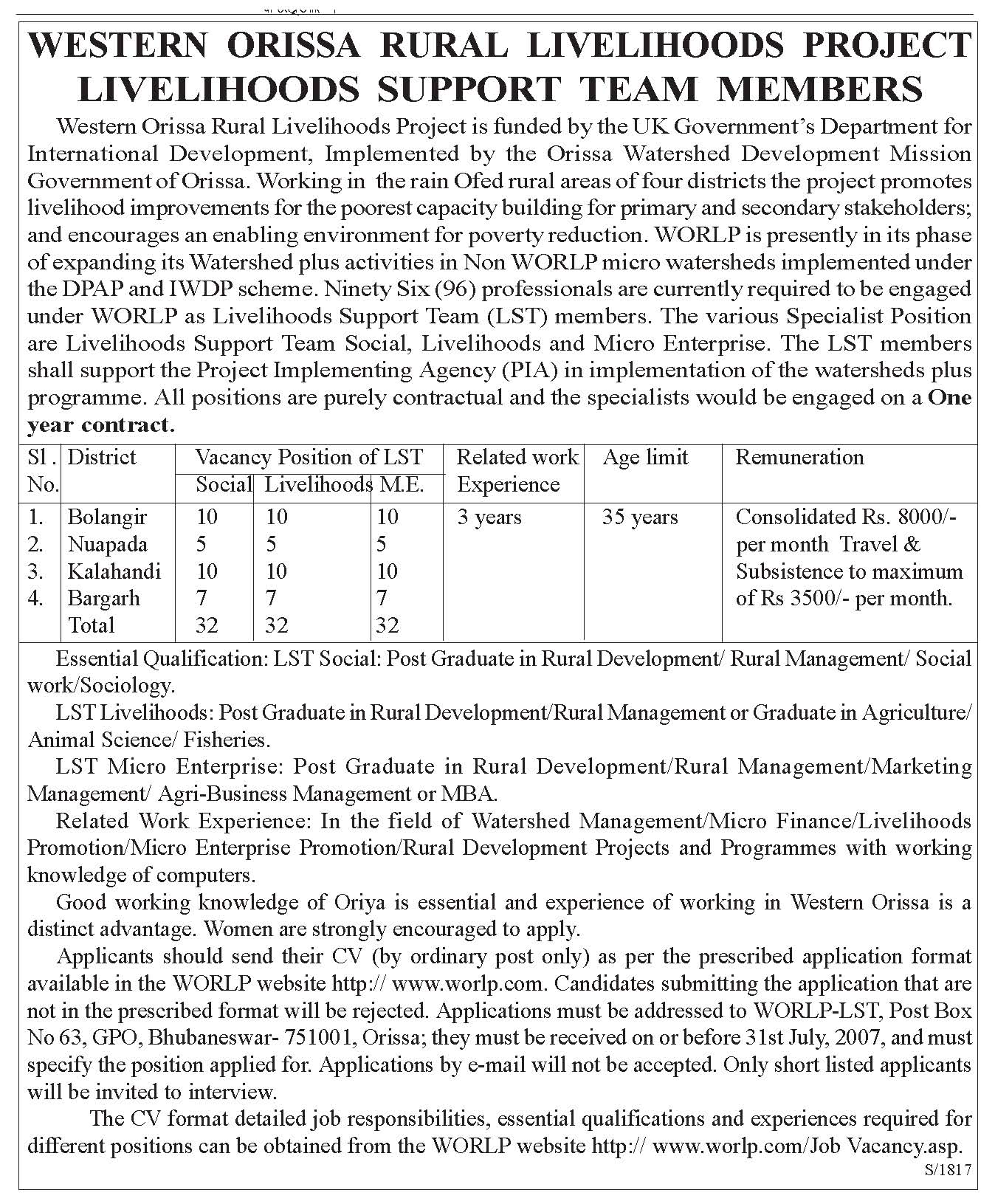Impact of watersheds: some real stories
Nuapada, Uncategorized, Watersheds Comments Off on Impact of watersheds: some real storiesFollowing is an excerpt from a report in Times of India.
Till recently, most families migrated to other areas to make a living. This went on till the villagers learnt how to conserve rainwater through watershed development.
Usually, the rainwater would drain off or simply dry up. Now, the community along with the Orissa government and NGOs has started watershed programmes to conserve water in wells, man-made ponds and bunds. The state government has set up a Watershed Development Mission — the first of its kind in India — to take up livelihood and community development programmes.
At the village level, watershed committees implement the programmes. The good thing is, women too have come to the forefront as agents of change. They have formed self-help groups (SHG) to supplement their income.
Malati Sabar’s is one such family in Suklimundi village, Nuapada. They used to migrate to brick kilns in Andhra Pradesh every year. Now, Malati collects mahua flowers to supplement her income while her husband, a small farmer, grows an annual paddy crop on their two-acre plot. Malati has also become a member of an SHG that retails kerosene. Recently, she took a loan from the SHG to buy a goat. "My life has changed ever since the watershed programme was introduced here," says Malati.
In western Orissa, the watershed programme is being jointly implemented by the government and Department for International Development (DFID) of the UK government under the Western Orissa Rural Livelihood Project (WORLP). "We are following a ‘watershed plus’ approach. The aim is to give people more livelihood options besides agriculture," says Sarat Behra, project director, Watershed Commission, Nuapada.Villagers say they are earning more from the same field and it’s regular income too. Moreover, they now have the option of both farm and non-farm activities in their villages. This has curtailed the seasonal distress migration.
Tunu Sabar of Larki village was one such migrant who would go to Andhra Pradesh during the lean season. "Hardly any work was available here. We couldn’t irrigate our fields or grow crops. Most of us went to Hyderabad, Bhuban-eshwar, even Surat to work in brick kilns or as labourers," he says. Life at the brick kilns was tough. Each family got Rs 5,000 as advance from the sardar along with a weekly food allowance. In the end, the sardar took his cut and the migrant was left with almost nothing. But now life’s looking up. Tunu now grows paddy, onions, vegetables, sunflowers etc, on his two-acre patch. He has built a low-cost onion storage area and his kaccha house has been replaced by a pucca one. He has a motorbike and even a telephone.
Similarly, Jamuna Sabar, a widow from Malpada village, used to work as a coolie during the lean months while her son went to Surat as a labourer. Now, they have dug a pond that helps them grow paddy and vegetables. "We plan to diversify our crops and start pisciculture too," says Jamuna.
Common cause
Watershed development is not just about livelihood but also capacity building. Awareness levels among villagers have gone up and community mobilisation is more easy. Ambahal village in Baragarh is a good example. Here, the watershed development community got together to shut the liquor shop so that the village could get aid from NGOs. "We realised we couldn’t get money unless everyone got together. So we shut the liquor shop. Now we are working to spread education, build roads, control malaria etc," says Kamilini Patnaik, chairperson, watershed development committee. Moreover, the community makes sure the development work touches the poorest first and then trickles up. The central government is now planning to replicate this success story in other states as well.


